Nonqualified Deferred Compensation Plan Elements
If your employer offers defer compensation as a reward option. This guide provides details on how nonqualified deferred compensation works.
Presented by: Kris Maksimovich, AIF®, CRPC®, CPFA®, CRC®
Nonqualified deferred compensation plan compensation is a term broadly used to describe any agreement between you and your employer to hold back your compensation until a future date or event, such as your retirement.
With an NQDC plan, an employer can offer certain employees the opportunity to defer compensation, without mandated contribution limits. Typically, employers choose to offer an NQDC plan as an added benefit to reward selected executives or key employees. It’s a retirement tool that helps these employees save money on a pretax and tax-deferred basis, often in amounts greater than what could be set aside in a qualified plan such as a 401(k).
Here, we provide an overview of key elements of NQDC plans, including vesting, taxes, and distributions.
Nonqualified Deferred Compensation Plan Basics
NQDC plans offer a lot of flexibility. Your employer can customize the features of its NQDC plan and offer the plan to select individuals only. Each plan’s specific features, operation, and administration are explained in the plan document. Often, an employer will provide a plan brochure or enrollment materials that summarize the plan and explain details of the plan administration.
The NQDC Account “Promise”
In the simplest form, an NQDC plan is an unsecured promise from your employer to pay your NQDC account balance at a future date. The plan gives you the opportunity to defer a portion of your salary or bonus before taxes. The money you defer is withheld from your paycheck and credited to your NQDC account. The NQDC account tracks your balance, which is the amount the employer owes to you and must pay you in the future. No actual cash or investments will be deposited or purchased in your NQDC account.
Depending on the structure of your plan, your account balance may consist solely of your own compensation deferrals. Your balance may also include amounts from your employer, if your employer offers a matching contribution or decides to reward you with a discretionary contribution.
Vesting. Amounts you defer from your income are always 100 percent vested to you, while amounts your employer matches or contributes may be subject to a vesting schedule. If you leave your employer prior to the point when your employer’s contributions are 100 percent vested, you may forfeit unvested amounts.
Rate of Return. Balances in the NQDC account will continue to grow tax-deferred until distributed out of the account. The rate of return is determined by your employer at the time you make a compensation deferral. The rate of return may be fixed, or it may be based on an index or on a variety of investment choices.
Distributions and Allowable Events. Distributions from your account must be triggered by an “allowable” event. Allowable events include separation from your employment for reasons such as retirement, death, or disability; an unforeseeable emergency; or a scheduled distribution date. Once an allowable event occurs, your NQDC account balance will be distributed within the time frame and in the form of payment specified by your plan’s structure or your elections. Distributed amounts are subject to ordinary income tax. Unlike a 401(k) account, an NQDC plan doesn’t provide an option to roll over balances into an IRA or another retirement plan.
Taxes. The employment taxes on your deferred compensation (generally FICA and FUTA) are paid at the time of deferral. For the amounts your employer contributes to your account, employment taxes are paid at the time you become 100 percent vested for these contributions. Ordinary income taxes (both federal and state) are deferred until you receive a distribution from your account.
Bankruptcy Risk. With a “qualified” plan such as a 401(k), your account assets are generally protected from creditors. But your NQDC account balance is subject to bankruptcy risk. If your employer files for bankruptcy, you’ll be waiting in line with other creditors of your employer to receive your NQDC balance.
Informal Funding. Although there is no legal requirement to do so, many companies set aside assets to informally finance the future distribution of your NQDC account. A common approach is to use life insurance as a funding vehicle, with your employer as the owner and beneficiary of the policy and you as the insured. The employer may ask you to complete paperwork and a medical exam to help set up the policy. The life insurance policy is considered an asset of the employer and will be subject to the employer’s creditors.
Enrollment. Generally, the election to defer is provided annually during open enrollment or during a special enrollment period when you’re first eligible to participate. Your first decision is to determine if you would like to participate and how much of your salary and bonus you would like to defer. You’ll be asked to make this decision in the year before you earn the income, within 30 days of initial enrollment, or, in specified situations (such as a performance bonus), up to six months ahead. Once you’ve made an election to defer, that election will be irrevocable for the year. Depending on how the plan is structured, you may be asked to select the timing of when to receive your balance (at retirement or a specified date) and the form of payment (lump sum or installment payments). You’ll have an opportunity to select an account beneficiary.
Section 409A. The Internal Revenue Code Section 409A provides rules for nonqualified plans that must be followed to maintain an account’s tax-deferred status and to avoid penalties. It’s important that elections and distributions are made according to the rules, thus ensuring that you don’t receive balance payments earlier than scheduled.
Plan Changes. You may change your named beneficiary at any time. Other changes may be limited by the plan document or 409A rules. If your employer agrees to allow certain changes, such as to a schedule distribution date or form of payment (installment or lump sum), Section 409A rules provide boundaries. These types of changes must be elected at least a year before the scheduled date and must delay the distribution timing by at least five years.
Understand Your Options
Each NQDC plan is different, depending on the features determined by your employer. Refer to your employer’s plan document and other plan materials to review your options. A best practice, whether you’re new to a plan or already participating, is to review your selections annually with your financial advisor. This habit will help ensure that your plan elections are in line with your overall financial goals.
For business owners, check out our article on nonqualified deferred compensation plans for business.
This material has been provided fo general informational purposes only and does not constitute either tax or legal advice. Although we go to great lengths to make sure our information is accurate and useful, we recommend you consult a tax preparer, professional tax advisor, or lawyer.
Kris Maksimovich is a financial advisor located at Global Wealth Advisors 4400 State Hwy 121, Ste. 200, Lewisville, TX 75056. He offers securities and advisory services as an Investment Adviser Representative of Commonwealth Financial Network®, Member FINRA/SIPC, a Registered Investment Adviser. Financial planning services offered through Global Wealth Advisors are separate and unrelated to Commonwealth. He can be reached at (972) 930-1238 or at info@gwadvisors.net.
© 2025 Commonwealth Financial Network®
Latest News
How much does college really cost?
April 2, 2025
How Much Does Your Bracket Pick Really Cost? We hope you're just as excited as we were for this year’s March Madness Tournament and finally getting down to F...
READ MORE...Big News for Retirees: Social Security Fairness Act Repeals WEP and GPO
March 27, 2025
If you or your spouse have worked in both the public and private sectors—or if you’re currently drawing a government pension—there’s important news that...
READ MORE...Managing Taxes on Your Investments
February 19, 2025
Presented by Scott Portlock CFP®, CLU® When it comes to your money, it’s not what you earn, it’s what you keep. Here are some ideas that may help le...
READ MORE...Loading...






